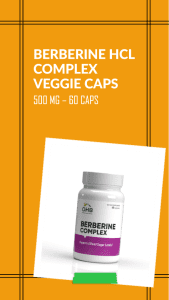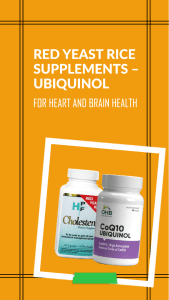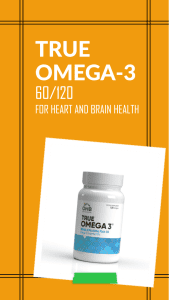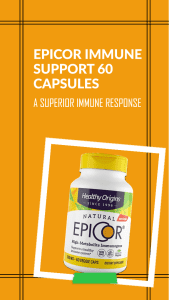
Share
Hey there, health fans and curious readers! Welcome to the Optimal Health Bridge blog, where science meets wellness—in a fun and friendly way. Today, we’re talking about something really important: prostate cancer. That’s the small, walnut-shaped gland that can cause big problems for men’s health.
But here’s the good news: changing your diet might help slow down the growth of prostate cancer. Yep, something as simple as eating the right fats can make a big difference!
Let’s explore how eating less omega-6 and more omega-3 can help support your body and boost your health.
I. Why Prostate Cancer Deserves Attention
Prostate cancer is the second most common cancer in men worldwide. That’s a big deal. But here’s the bright side: what you eat can really help lower your risk or slow it down if you already have it.
Let’s talk about fats—omega fats to be exact.
II. Understanding the Omega Family: 3 vs. 6
A. What Are Omega-3 and Omega-6 Fats?
- Omega-6: Found in vegetable oils (like corn, soybean, and sunflower), chips, and many salad dressings. Most people eat way too much.
- Omega-3: Healthier fats found in salmon, sardines, walnuts, flaxseeds, and fish oil supplements. These are the good guys!
B. How Do They Work in Your Body?
Think of omega-3 and omega-6 like a tug-of-war. They should be balanced. But in today’s modern diet, omega-6 usually wins—and that’s not good. Too much omega-6 can lead to more inflammation, which makes health problems, including cancer, worse.
- Healthy ratio: 1:1 to 4:1 (omega-6 to omega-3)
- Western diet ratio: 15:1 or more (ouch!)
- The result: More inflammation, higher cancer risk, and other health problems
It’s time to eat fewer inflammatory fats and load up on the healthy ones.
III. Omega Fats & Prostate Cancer: What the Science Says
Experts have discovered that eating more omega-3 and less omega-6 might help slow down prostate cancer. Let’s look at what they’ve found.
A. How Omega-6 Fats Can Hurt
- Omega-6 fats help make chemicals in the body that cause inflammation.
- Ongoing inflammation creates an environment where cancer can grow and spread more easily.
- Some studies show that high omega-6 diets are linked to faster tumor growth in the prostate.
B. Omega-3 to the Rescue
- Omega-3s like EPA and DHA help fight inflammation.
- They can even cut off the blood supply that tumors need to grow.
- They may help your treatments, like radiation, work better.
- Your body can’t make omega-3 on its own—you need to eat it or take a supplement.
C. 10 Scientific Studies You Should Know
- Zheng et al., 2013: Omega-3s slowed tumor growth in mice.
- Ornish et al., 2005: A healthy lifestyle with omega-3s helped slow down cancer in men.
- Brasky et al., 2013: Controversial study questioned omega-3s, but many say the research had flaws.
- Aronson et al., 2011: Fish oil supplements slowed prostate cancer cell growth in a few weeks.
- Berquin et al., 2007: Better omega-6 to omega-3 balance made tumors smaller in mice.
- Kobayashi et al., 2017: Omega-3s changed how cancer cells acted on a genetic level—very cool!
- Akinsete et al., 2012: DHA stopped new blood vessels from feeding tumors.
- Nemes et al., 2020: Omega-3s helped cancer treatments work better in a big review of studies.
- Epstein et al., 2010: A healthy diet helped lower PSA levels in men with prostate issues.
- Duffy et al., 2019: Omega-6 fats were shown to increase cancer-related inflammation.
Fish oils are pretty powerful, and the good ones don’t even give you fishy burps!
IV. Eat Smart: Top 10 Omega-3 Rich, Low Omega-6 Foods
Want to give your body a boost? Add these foods to your shopping list:
- Salmon – loaded with EPA and DHA.
- Sardines – small, packed with benefits, and easy on the wallet.
- Mackerel – rich in flavor and healthy fats.
- Flaxseeds – toss them in a smoothie or yogurt.
- Walnuts – crunchy, tasty, and low in omega-6.
- Chia seeds – tiny but full of omega-3.
- Olive oil – a smart swap for unhealthy vegetable oils.
- Seaweed/Algae – great for plant-based eaters.
- Omega-3 enriched eggs – laid by chickens fed healthy diets.
- High-quality omega-3 supplements – easy and effective!
V. How to Lower Your Omega-6 Intake
It’s not just what you add to your diet—it’s also what you take away. Here’s how to cut omega-6:
- Avoid seed oils like corn, soybean, and sunflower.
- Use olive oil, avocado oil, or coconut oil instead.
- Skip processed snacks like chips and cookies.
- Choose grass-fed meats when possible.
- Watch out for fast food—those fryers are full of bad fats.
VI. Supplements: Nutrition in a Softgel
If you don’t love fish, that’s okay. Omega-3 supplements are a great option. At Optimal Health Bridge, we offer high-quality, burp-free softgels that support heart, brain, and prostate health.
Bonus perks of omega-3s:
- Sharper thinking
- Healthier heart
- Less joint pain
- Better mood
That’s a lot of benefits from one little capsule!
VII. What You Can Do Today
Ready to make a change? Here’s a simple checklist:
- Buy omega-3 rich foods from the list above.
- Remove processed seed oils from your pantry.
- Aim for a 4:1 ratio (or better) of omega-6 to omega-3.
- Eat fatty fish at least two times per week.
- Consider taking a quality omega-3 supplement.
- Talk to a doctor, especially if you're at risk for prostate cancer.
- Keep moving—exercise and stress relief help too!
- Start today—your future self will be grateful.
Final Thoughts: Fat Isn’t the Enemy
Good fats help your body work at its best. But bad fats—especially too much omega-6—can cause trouble. Think of it like a noisy neighbor who keeps revving their engine every morning. You don’t hate engines, you just want peace and balance.
Balance your fats, add more omega-3s, and you'll be giving your body the support it needs to fight back against prostate cancer and stay healthy.
Need a little help? Check out our powerful, prostate-friendly omega-3 softgels today!










